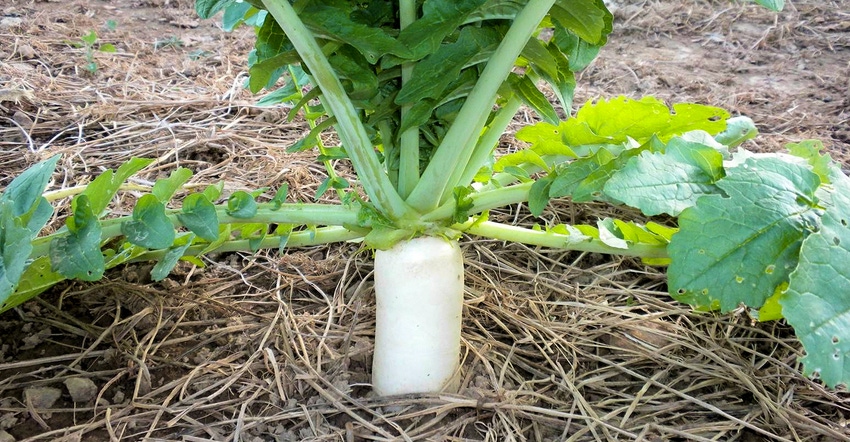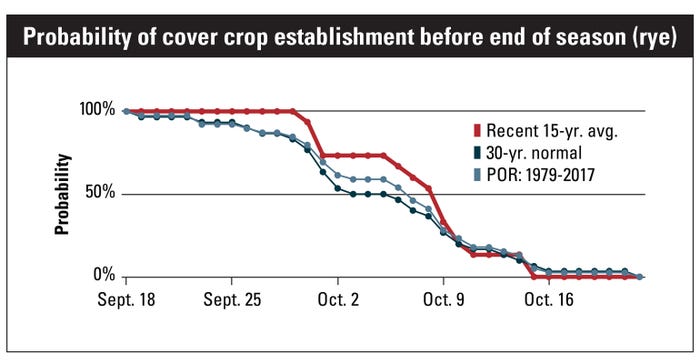August 30, 2018

I am frequently asked, "How late is too late to plant cover crops in the fall?" There is no decisive answer. Tell me what the weather will be like for the next six weeks and I would be confident in recommending the last date for establishing a cover crop.
It boils down to understanding the weather trends for your area and the amount of risk you may want to take, just like you do with your cash-cropping decisions in the spring. If it’s mid-June and still too wet to plant corn, do you stay with corn or switch to beans? The same thinking applies to cover crops.
Know the species potential
It’s well-known that cereal rye can be planted anytime in the fall and will undoubtedly grow. You may not see it until spring, but it’ll be there. The question is, when do other species reach the end of a justifiable planting window? It is important to know that there are winter hardiness and late planting date variations within a given species. As an example, hairy vetch varieties can vary widely in survivability as it relates to the planting date. Knowing how a specific species performs in your area can only be known with personal experience or a trusted seed sales person.
The case for mixes
Planting cover crop mixes has been popular for many reasons. Specifically, this practice has merit at the end of a species planting window. For example, radishes might not be the best cover to plant at the end of September in most regions. But spending $4 an acre on 2 pounds of radish seed may be worth the risk if you planted it in a mix that includes cereal rye or triticale. Also, the more winter-hardy species may protect the others in the mix.

Get it in the ground
Anytime you are planting late, be sure to get the seeds in the ground. Do not broadcast the seed on the soil surface as this will delay germination if wet weather is not experienced immediately. Soil temperatures are generally warm in the fall and seeds will sprout quickly, especially in a no-till situation where significant crop residue is present.
Use weather data
For those in the Northeast, Cornell University has developed the Winter Cover Crop Planning Scheduler, which is associated with Cornell's Climate Smart Farming Program. Simply type in your ZIP code, enter the desired species you would like to plant, and the model will tell you the probability of success on any given date. It uses historical weather data from the past 30 years but also allows you to see more recent weather patterns over the past 15 years. For those more comfortable managing late planning decisions with data, this tool is for you.
Check out the digital tool here.
And then there’s cereal rye
It’s never too late to plant cereal rye. You may not see it in the waning weeks of the fall, but it’ll pop up as soon as temperatures begin rising above 40 degrees in the early spring. If you are planting late, you should use a higher seeding rate - up to 2 bushels or more — if the strategy is to use cereal rye for forage.
Coach's Closer
There are several guides you can utilize to make late planting decisions. Use them to determine your risk in making the most of your cover crop planting opportunity.
About the Author(s)
You May Also Like




